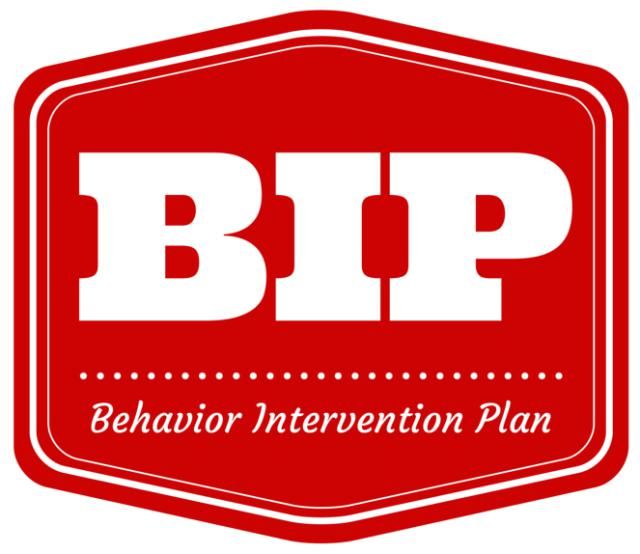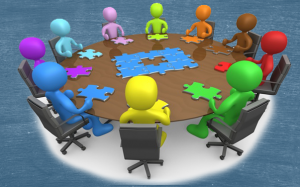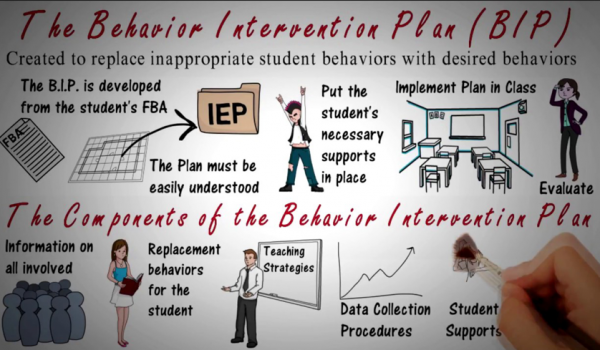
13 Jul Understanding Behavior Interventions Plans
Decreasing inappropriate behaviors for students can be a formidable task in education today. As a result, Behavior Intervention Plans (BIPs) are both incredibly helpful and can sometimes seem overwhelming. When a student’s behavior is inhibiting his/her own learning or the learning of others in the classroom, teachers often seek assistance in the form of behavior modification. The BIP can be used with general education students or with students with special needs.
The BIP at a Glance
The Behavior Intervention Plan, in conjunction with the Functional Behavioral Assessment (FBA) is a formal way for school professionals, teachers, parents, and others to work together to help a student become more successful while not sacrificing classroom management. The FBA is intended to be a problem solving process used to determine the function of a student’s behavior and is used prior to a Behavior Intervention Plan (BIP). A BIP can be written for any disability area, if learning is impacted by behavior. As a result, the BIP serves as the actual plan created to help improve behavior by also managing the following:
- Formal way to document interventions that are attempted
- Addresses behaviors that disrupt the child’s learning or the learning of others
- Describes what the behavior is, the reasons it occurs & interventions to address the behavior

Team Approach for BIPs

The entire Individual Education Plan (IEP) team is involved in collecting data across settings and examining and analyzing information for the BIP. When developing a BIP it is important to plan for collaborating with the entire team. Do not surprise the parent/caregiver with a BIP. Involve all team members from the beginning since all sources of information and team members are equally valuable:
- Case Manager
- Parents/Caregivers
- Student
- School Professionals (Administrator or School Psychologist)
- Any necessary general education teachers
- Related service providers or others who know the student well
Characteristics of BIPs
A BIP should include specific steps that serve as preventative strategies and modifications to help a student learn new behavior skills while modeling positive reinforcement. A BIP should include the following items:
- Targeted behavior (Name & describe the behavior to be addressed)
- Baseline data (frequency, duration & intensity)
- Behavior to be taught to replace targeted behavior (include who will teach the skill)
- Plan for reinforcing the behavior
- Consequences if the targeted behavior continues
- Assessment of the BIP (How will you know it is working? Collect data to show changes)
5 Tips for Writing BIPs
Data Collection & Systems
When beginning the path of building a BIP, remember it must be data driven. Analyze the data and look for patterns. Consider systems that are already in place for data collection. For example: Data around behavior could be collected from office referrals. Collect data in a variety of settings (classroom, bus, passing periods, lunch, etc.) Throughout, consider referencing special education templates and use them as a guide for data collection.
Environment
It is important to consider the environment(s) the student is in throughout their day. Consider, how does it contribute to the behavior? Think about the function of the targeted behavior and consider what does the student gain from it in their situation or environment? Examples include attention, work avoidance, and perceived power.
Forms and Goals of BIPs
As the case manager, it is important to remember that BIPs do not have to be complicated – especially if you are feeling overwhelmed with the process. They need to be easily understood (think step-by-step).
- No two BIPs should look the same (Individualize)
- BIPs can be written as narratives, forms, or charts while focusing on addressing the key elements.
- BIPs should be continually evaluated and updated.
- BIP should be found in the IEP (goals) and the FBA.
Goals should be measurable with baseline data already collected. This is a way for a person to determine how well the plan is working. It is more effective to express the behavior you are seeking, rather than the negative behavior.
Influences on Student Behavior
Before, during and especially after developing the FBA and BIP, parents or caregivers ideally should be partners in providing reinforcements for positive behavior. In terms of influences, focus on 2-3 behaviors that you would like the student to improve upon. Focusing on too many behaviors can be overwhelming for the student and the teacher, and decreasing the chance for meaningful change. In addition, consider the following questions:
- Who is involved in the behavior (preventing it or making it worse)?
- Why does the behavior happen?
- What happens with the behavior?
- Where does it occur?
- When does the behavior occur?
- When does it not occur?
- How long does it last?
Interventions and Preventative Strategies
Within BIPs, any and all intervention and preventative strategies should be specific and clearly stated, including the persons responsible for implementing interventions, rewards, or measurement of the intervention. Also, remember when a behavior is removed it must be replaced with an alternative behavior. Consider, what should the student do instead?
Helpful Resource About BIPs
(Press Play to Watch the Understanding Behavior Interventions Plan Training Video)
Lastly, here are some best practice tips for writing a BIP:
- Look at systems that are already in place for data collection – including things like data around behavior that could be collected from office referrals
- Look for special education templates that may be available and use them (when appropriate) as a guide for data collection
- Collect data in a variety of settings possibly including classrooms, buses, passing periods, lunch, etc.
- Analyze the data and look for patterns including who is involved in the behavior (preventing or making it worse)
- Think simple and step-by-step
- Continually evaluate and update the BIP
- Parents/caregivers can and whenever possible should be involved in providing reinforcements for positive behavior
If you are interested in additional educational resources, Ten Sigma offers a variety of short videos (like the “Behavior Intervention Plan” video on this page) that are part of our Transition Tuesday series. You can also visit https://tensigma.org to learn more about all of our education tools.




